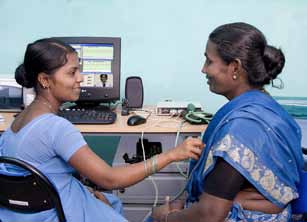Initiatives by the government could not only promote telemedicine but also help to ensure the quality and accountability of telemedicine-based services. The government of India was one of the earliest to take a step towards telemedicine. This is one reason why we find several start-ups working in this field.
“Way back in 2001, the government promoted telemedicine and supported pilot projects for concept testing. This initiative created awareness amongst industry players, and hence many companies have emerged. Later, they drafted recommended standards for telemedicine and healthcare. Those documents are very well-drafted and many national and international organisations are following them,” says Devendra Patel, director, Medisoft Telemedicine. Many state governments, including Himachal Pradesh and Gujarat, are also in various stages of the experimentation and learning curve. In short, there is a lot of hope in sight.
Patel adds, “India is well-positioned in telemedicine markets world wide. It holds a very strong position especially in clinical telemedicine, which connects two or more clinics; the other aspect of telemedicine is home healthcare. Our Pakistani client always wonders why there are only two companies in Pakistan, whereas India has more than 15 companies in telemedicine. This is because of systematic efforts by government departments like the Ministry of Information Technology and organisations like ISRO. Due to their early initiative, companies like Medisoft found an opportunity in this segment.”
Initially, start-ups in telemedicine were merely seen as social innovators and people with a faraway dream. Sceptics doubted (and continue to doubt) the profitability of such ventures. However, it has now become obvious that there is a very strong business case for telemedicine, and these start-ups, if done right, will soon strike gold. Not just in India, but even in developed nations like the USA, the escalating costs of healthcare are driving the state governments to promote telemedicine.
Over the last year, we have seen not only more start-ups coming up in this space but also several technology majors including Cisco and IBM collaborating with governments and healthcare institutions to take telemedicine-related technologies (medical equipment, connectivity, data analysis, archiving, videoconferencing, et al) forward to the mainstream, not only in rural areas where skilled medical practitioners are rare but also in urban areas where the never-ending trafficjam makes it difficult for patients to reach the hospital in time.
As the population of stake holders in telemedicine rises, so does the quality of technologies and services. Dr Johnson points out that developments with regard to Internet penetration and bandwidth, videoconferencing and the digitisation of medical devices continue to give telemedicine a boost. Let us look at some of these developments to get a better picture of the telemedicine today.

From e-health to m-health
While the Internet is widely considered to be the backbone of the telemedicine framework, recent trends seem to be favouring mobile networks instead!
Mobile-to-mobile (M2M) connectivity is believed to be especially useful for health monitoring of the aged or chronically-ill patients at home. Dr Arjun Kalyanpur, chief radiologist and CEO, Teleradiology Solutions, points out that home health monitoring is a very important aspect of telemedicine. “Based on various research figures, it is clear that technology that allows for home monitoring of elderly and chronically-ill patients, coupled with telemedicine, will be a critical tool in preventing unnecessary hospital admissions and keeping healthcare costs down overall,” he says. And, this target population is more likely to have a mobile phone than an Internet connection. This is true in rural areas also, where the mobile network is more pervasive than the Internet.
At the simplest level, consider a healthcare professional who delivers prescriptions via SMS, as well as reminders to take the medicines on time. Or, consider medical equipment connected to the mobile network, such as the service from Maestros and BlackBerry along with Vodafone. On a more complex level, it is possible to use sensors or wearable micro devices on or around the body. Robert Miller, executive director of technology at AT&T, very appropriately called it ‘medical jewellery.’
These devices are powered by advanced signal processing and have sophisticated chip radios—they combine radio frequency (RF) capabilities along with processing and other required features. These can be connected through low-power Bluetooth or other technologies to a handset. Zigbee, a Wi-Fi like wireless solution, is being touted to be the ideal low-power local-area networking (LAN) solution for health monitoring solutions. The Continua Healthcare Alliance, an industry coalition working towards standards for telemedicine and health monitoring, also recommends Zigbee. It defines certain standards for the wide-area network (WAN) used for health monitoring, etc.
The handset could then transmit the sensor data to a central location, using a WAN, like a mobile network. This information would then be captured and interpreted by a server, to aid doctors in their treatment. This way, the doctors can get hold of a ‘trend’ rather than a mere ‘reading’ of the patient’s medical condition.







good visions